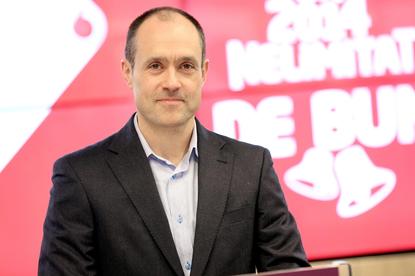Hutchison, analysts differ on state of Vodafone turnaround
- 25 February, 2014 09:45

Inaki Berroeta is set to take over the turnaround initiative at Vodafone Australia.
Telecom analysts are not ready to declare a turnaround at Vodafone Hutchison Australia despite the telco’s claims that things are on the up.
Hutchison Telecoms, the Australian half of VHA, yesterday revealed it had lost 1.23 million customers in 2013, ending the calendar year with 5.3 million customers. However, in a statement, Hutchison indicated the situation had improved significantly in the second half of the year.
“The decline in active Vodafone brand customers plateaued in the third quarter and showed a modest net gain in the fourth quarter,” the telco said.
In addition, Hutchison said much of the loss is attributable to the removal of inactive accounts and consolidation of the the Vodafone, 3 and Crazy John’s brands.
However, independent telecom analyst Chris Coughlan told Computerworld Australia that it’s difficult to tell if Vodafone is making a comeback without knowing customer churn, a financial figure that measures how many customers have left.
“While a swing in net subs appears good, if churn away is still high then it means that they are working really hard to add new subs to produce the better result,” Coughlan said.
“I'd want to see churn detail and some key customer indicator numbers like net promoter score results before I'd say they had turned the corner.”
Also read: 4G in Australia: The state of the nation
IBRS analyst Guy Cranswick is also not convinced that the customer situation at Vodafone is improving.
“Hard to say as they indicate losses were attributable to consolidation of brands and to say 'plateaued' does not show the trend which is critical,” he said. “Without that it’s hard to say. Even if it’s slowed that is not a change for the better as the trend is the significant thing to look for and they have not shown it to help their case.
“The ARPU has improved but that could be a result of the consolidation and it may improve later on if the turnaround continues,” he added.
“They deserve points for candour but the struggle to rectify the brand and financial problems have not been cured quickly enough and will likely cost more into the first half of 2014.”
Vodafone has shown improvement but still has a way to go, said telecom analyst Paul Budde.
“It looks like they have stopped the rot and what a disaster this has been,” he said. “The ‘rot’ took far too long to stop and I am afraid that it has done unrecoverable damage. In this highly competitive market losing over one million customers will be hard to reverse.”
VHA is still suffering from very high debt – among the highest in the world for a mobile carrier, added Budde. “So they don’t have a lot of financial room to buy themselves back in the market.”
“It is all about price and Telstra in particular has plenty of cash and has the momentum to grow further, it will be a very tough call for Vodafone to go forwards. Being the third player in the market as they clearly state themselves is a risky position to be in.”
The analysts predicted a long road is still ahead for Vodafone.
“They are in weak shape,” said Cranswick. “Still bleeding cash and their competitive costs extend the adjustment.”
Coughlan said, “Back in 2010/11 when they had their network issues I predicted that they could take up to five years to turn the business around, and this could still be the case.”
Hutchison painted a much more optimistic picture for itself in financial results released yesterday.
“VHA has gone through a significant year in its company history as it reaches the halfway mark of an ambitious three-year business turnaround," Hutchison said.
“With significant improvement in network performance, innovative product and service initiatives and ongoing transformation of customer experience, VHA is seeing its brand image improve.”
The telco admitted it still has much work to do.
“Transforming brand sentiment by lowering brand rejection and further improving the NPS is a core requirement to deliver the turnaround plan; and changes to consumer perception are lagging behind network improvements.”
In 2014, Hutchison said it would continue to expand its 3G and 4G networks, enhance network reliability and increase indoor coverage. Internally, the company plans to consolidate its data centres and modernise IT systems, it said.
With the departure of CEO Bill Morrow – who is taking on the CEO role at NBN Co – leading the turnaround effort will be Inaki Berroeta, the former CEO of Vodafone Romania.
Hutchison said it is “confident that progress on the turnaround plan will continue under the direction of the” new CEO.
Adam Bender covers telco and enterprise tech issues for Computerworld and is the author of a dystopian novel about surveillance. Follow him on Twitter: @WatchAdam
Follow Computerworld Australia on Twitter: @ComputerworldAU, or take part in the Computerworld conversation on LinkedIn: Computerworld Australia

